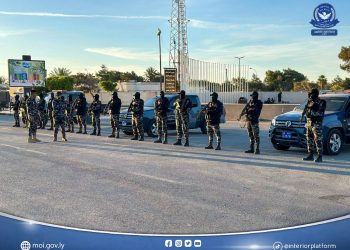By Lorianne Updike Toler.

Washington, US, 9 October:
Amidst all the wrangling over who should become the next prime minister, much-needed focus has . . .[restrict]been lost on an even bigger challenge, that of drafting a new constitution.
Looking beyond present difficulties, crafting a constitution will require the National Congress to address several questions that will impact upon its legitimacy and longevity. These questions involve the extent of public participation, whether the Constitutional Commission will be an arm of Congress or independent, and the timing of the procedure, to name a few. This article will focus on the question of timing, demonstrating through comparative perspective that Libya’s timeline is too abbreviated to allow for meaningful public participation, training, and deliberation, and should be extended to at least one year.
Currently, under an amendment to Article 30 of the Constitutional Declaration passed by the National Transitional Council on 13 March 2012, the drafters of the new constitution are given 120 days, or four months, from the date of Congress’s first meeting, followed by a 30 day period in which a referendum must be held. Should the constitutional draft be rejected, the drafters will have another 30 days to re-submit a draft to the public.
Even beyond that, this timeline raises many questions, not the least of which is whether the public, territorial leaders, and civil society will have an opportunity to participate in the process short of an up-or-down referendum. Additionally, will the drafters have enough time to review other constitutions and seek out consultation by experts? Given the length of time that was necessary to hold and tally votes in the last election, is a one-month timeline adequate for ratification? Finally, and perhaps most importantly, will this timeline allow the drafters adequate time to review, deliberate upon, and resolve pressing and long-term issues facing Libya for a first—and especially a second—draft if necessary.
Libya’s is the shortest drafting timeline of the three countries in the region writing constitutions. Egypt gave itself six months to produce a final draft, which was due the end of September. However, due to boycotts and delays in their procedure (all of which have undermined legitimacy of the process and its actors), they have thus far only finished drafting the chapter on freedoms, rights, and duties of citizens. Tunisia, which produced a first draft on 8 August, has lengthened their timeline to allow for public participation to one year, terminating in February 2013.
Libya’s drafting timeline is also shorter than other constitutions produced in recent history. In Nepal, the drafting process is four years and counting. (The constituent assembly was dissolved this May and, with it, the ability to draft election laws for an unanticipated election set for November, leaving it unclear when a final draft will be promulgated.) All told, producing a final constitution in Afghanistan required drafters five and then another two months (interrupted by President Hamid Karzai’s controversial redrafting). In Iraq, the international community imposed a six-month drafting period, which resulted in a nine-month period from elections to referendum.
Kenya’s 2010 constitution required a year to complete, including a significant period for public input into a first draft. Finally, in South Africa’s five year period from inception to final constitution, the drafters (after years of haggling over process) took four months to write a first draft and another six to get feedback from the public and produce a final draft.
Libya’s drafting timeline may be compared to the four months in which the American Founding Fathers drafted the US constitution in 1787, the second oldest written constitution yet in operation (the Massachusetts state constitution is older, adopted in 1780), yet to say that the American drafting timeline was limited to four months is somewhat deceptive. That period does not embrace the three years that were required for all 13 states to ratify the document.
Additionally, the period does not include the decade plus of constitution-writing and execution experience individual Framers had in their home states—experience that made the short drafting period of 1787 feasible.
In America as well as in South Africa and Kenya—all countries wherein domestic constitutions have been well-received by governing peoples—public participation was a crucial legitimating element. Public participation in the constitutional process of these countries has allowed for the kind of meaningful consent that later undergirded voluntary and peaceful compliance with the rule of law. While drafting a constitution in a hurry may present its own difficulties for crafting appropriate legal language, processes that disallow for meaningful public participation risk voiding the stabilising and legitimising impact such participation brings.
In short, when considered in comparative perspective, Libya’s constitutional timeframe is lacking and too abbreviated to allow for thoughtful deliberation, training and consultation, and especially for meaningful public participation.
Such a timeline is risky. Not only is it not practical, precipitating changes that undermine legitimacy as happened in Egypt, but it will deprive drafters of expertise if desired and time to carefully weigh and balance the country’s long-term and immediate needs. Most crucially, it will deprive the public of the opportunity to weigh in on important issues such as the role of sharia and federalism.
Doing so will deny the Libyan people an important and historic opportunity to meaningfully participate in the creation of a document that could herald a new permanent political and legal order for their newly-freed country. Keeping the timeline short will risk losing the stabilising and peace-building influence such public participation might bring.
Based on the considerations outlined above, this author strongly recommends that members of the interim parliament reconsider the timeline adopted by the NTC and provide themselves at least one year to produce a final draft as the Tunisians have done, and expand the referendum and revision timelines.
To pursue the questions raised in this article and others related to Libyan constitutional procedure, this will be the first in a series of weekly articles wherein the constitutional procedures of various countries from the region and history will be examined and compared in-depth. [/restrict]









